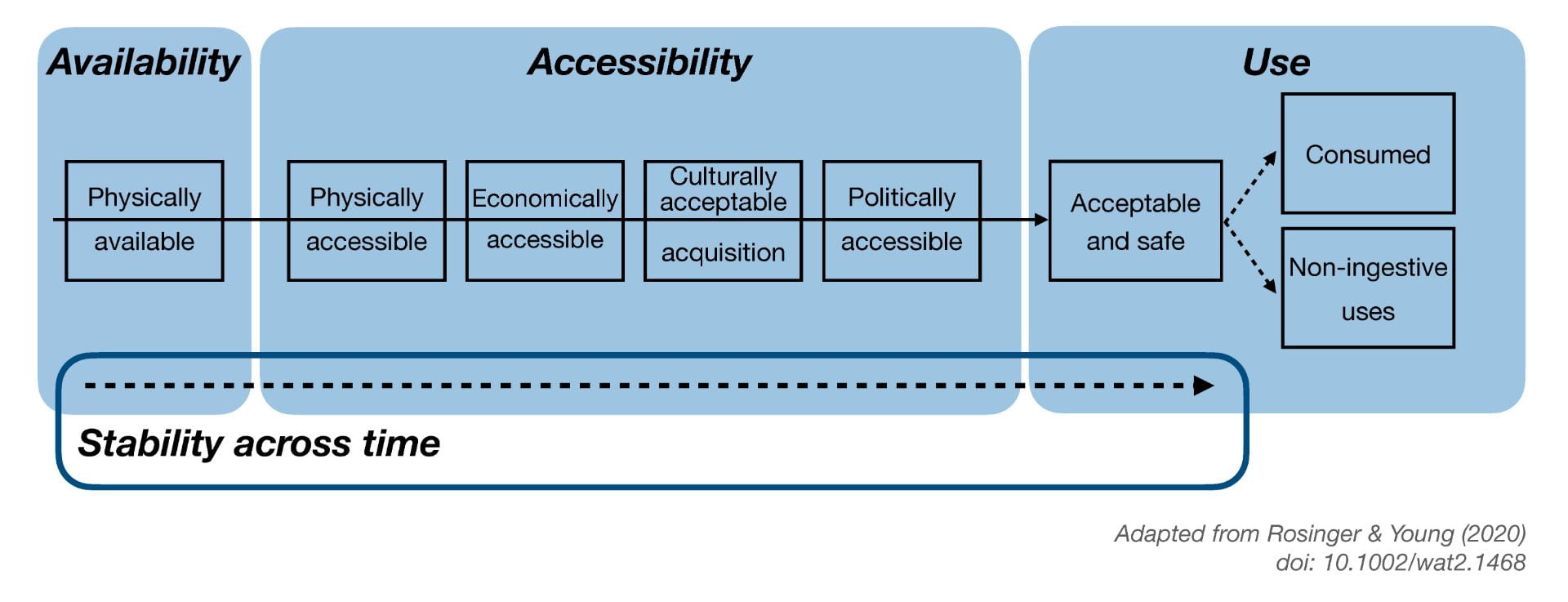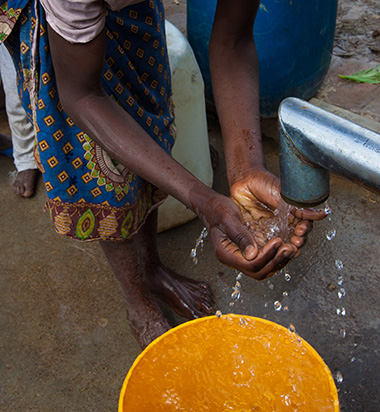About the Scales
What do the WISE Scales measure?
Most definitions of water security touch on four domains:
- Availability: if there is any water present
- Accessibility: if there are physical, economic, or political barriers
- Use: acceptability for consumption and non-ingestive purposes
- Stability (or reliability) across time.
The WISE Scales are a holistic measure of the human experience that spans these domains.

Legend: Adapted from Slaymaker et al and Rosinger & Young. The above graphic can also be accessed in an accessible Word document format.
The WISE Scales contrast with other common, globally comparable water indicators, which typically capture only physical availability, infrastructure, or safety. Such indicators are devoid of the human experience with water and do not provide information on who is most vulnerable to problems with water availability, access, use, and stability.
Just as experiential measures of food insecurity have been transformative for policy and programs (e.g., the Food Insecurity Experiences Scale used as an indicator for the U.N.’s Sustainable Development Goal of reducing world hunger), we anticipate that experiential measures of water insecurity will be similarly insightful. We hope that reducing individual and household water insecurity will also become a development goal in the near future. Being able to measure water insecurity is a first step toward developing such a goal.
